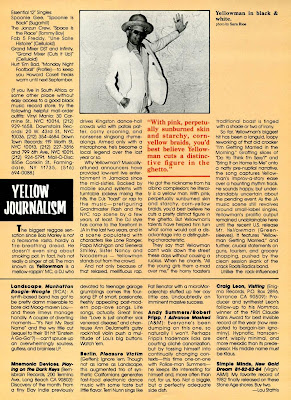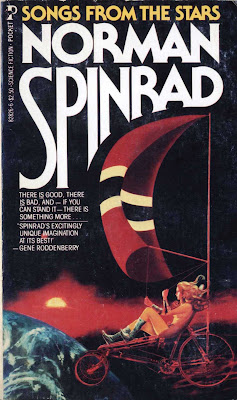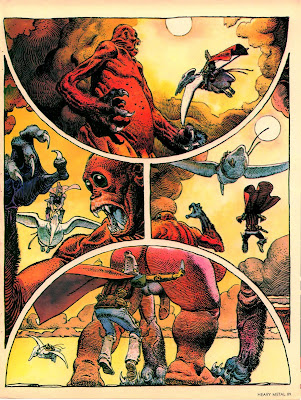Book Review: 'Mute Evidence' by Daniel Kagan and Ian Summers

2 / 5 Stars
In the early-morning hours of December of 1979, Ian Summers, an editor and ‘packager’ of such illustrated 70s sf and fantasy novels as Urshurak, The Art of the Brothers Hildebrandt, and Tomorrow and Beyond, was in the studio of Denver station KOA.
Summers was the guest on ‘The Tony Larson Show’, a late-night talk radio show devoted to oddball topics such as ghosts, UFOs, the Bermuda Triangle, etc.
Larson was more or a less a predecessor of the fringe culture’s most successful radio program, Art Bell’s 'Coast to Coast AM'.
Summers was promoting his latest publication, Barlowe’s Guide to Extraterrestrials. In the course of the broadcast, which despite its late hour drew many call-ins, one caller brought up the subject of cattle mutilations, and whether Summers believed that ‘extraterrestrials’ were responsible.
Summers facetiously replied that although he knew something about extraterrestrials, he knew nothing about cattle mutilations.
A month after that radio program, Summers read an article about cattle mutilations by Harry Lebelson in the ‘UFO Update’ page of the January, 1980 issue of Omni magazine.

Sensing a publishing project in the offing, Summers contacted another New York City –based author and writer, one Daniel Kagan. Together, Summers and Kagan spent most of 1980 researching the mutilation phenomenon.
The result of their investigation is 'Mute Evidence' (Bantam Books, July 1984, cover art by Gary La Sasso). At 504 pages, it’s a thick chunk of a book.
For those who remember, cattle mutilations were one of the more prominent manifestations of 70s fringe culture, particularly in the American West. Expanding reportage of mutilations began in 1973, and quickly became a major topic of local news for the ensuing 7 – 8 years.
The main features of the mutilation phenomenon were the unusual nature of the wounds observed in deceased cattle and other livestock: ‘surgically’ removed genitals, eyes, lips, tongue, or internal organs. Some onlookers remarked that the wounds bore signs of being made by lasers, and that the carcasses were unusually resistant to decay, or had strange glowing lights associated with them.
Other witnesses reported scorch marks or large indentations in the terrain around the carcass, suggestive of the presence of an enormous, heavy object. Still other witnesses claimed that the animals had broken bones, suggestive of being dropped from a considerable height; some observers even recounted finding dead animals high atop trees.

The high point of the whole mutilation culture probably came with the release of the 1982 low-budget horror film Endangered Species, starring Robert Urich and JoBeth Williams.
After that the whole phenomenon started to die down, and today it remains noteworthy more as a footnote to 70s pop culture, than a high-profile topic in the fringe culture proper.
Summers and Kagan devote the first half of their book to an overview of the cattle mutilation phenomenon, followed by recitations of meetings with prominent members of the mutilation ‘network’, comprised of ‘mutologists’ devoted to discussion and theorizing about ‘mutes’.
The team also meets with law enforcement and veterinary personnel in a number of Midwestern and western states. They learn that there is no shortage of theories as to what (or who) is behind the mutilations: cultists practicing animal sacrifice; UFOs; and secret government organizations conducting chem-bio warfare.
By the end of 1979, concern about cattle mutilations in New Mexico, and the outcry from residents and cattlemen, had prompted the state to carry out a major investigation, headed by a former FBI agent named Ken Rommel. Kagan and Summers devote an entire chapter to a laborious examination of Rommel’s report, which firmly declares that ‘mutes’ are the result of predator damage to the carcasses of dead cattle.
An entire chapter is also devoted to analyzing a mutilation documentary released in 1980, titled A Strange Harvest, by an indie filmmaker (and UFO Believer) named Linda Howe.

The second half of the book is one lengthy travelogue, and
Kagan and Summers journey to Canada and several Midwestern / Southern states,
interviewing ‘mutologists’, law enforcement personnel, members of the media,
and veterinarians.
Somewhat unsurprisingly, as Kagan and Summers wend through
their investigation, they come to the realization that the ‘mutology’ network is
peopled by hoaxers and cranks; that the suggestive influence of the media
trumps common sense; and that many of the statistics on livestock mutilations
are utter fabrications.
At times ‘Mute Evidence’ becomes tedious and dull, as the
authors trudge on with their interviews and queries, trying to maintain an
attitude of impartiality even as the credibility of the mutilation phenomenon dissipates
with ever greater speed.
Perhaps the best parts of the book are those that shine a
light on strange little aspects of the popular culture in 1980.
For example, Kagan and Summers have a phone conversation
with none other than Beatrice Sparks, who is best known as the ‘editor’ of the
classic 70s teen drug memoir, Go Ask Alice. It seems that in 1980 Sparks ‘edited’
yet another lurid teen ‘autobiography’, this one titled Jay’s Journal.

Journal is about an American teenager who becomes involved
in a Satanic cult (!) that counts many teenagers among its adherents. ‘Jay’ describes
participating in a cow mutilation in Colorado, as part of a cult ritual. Sparks
tells Kagan and Summers that, in the course of ‘interviewing’ teen cult members
for the book, she witnessed them bending bobby pins and levitating coins as a
demonstration of their ‘powers’ (!).
Other chapters of the book introduce all the tried and true manifestations of 70s Paranoia: Black Helicopters, Men in Black, tapped phone lines, secret experiments in biological warfare, media participation in coverups, the collusion of law enforcement and the feds, etc., etc.
In the final chapter Kagan and Summers conclude with the
obvious: the mutilations are a manifestation of the same fringe culture that
gave us UFO abductions, Bigfoot, ‘cryptozoology’, and The X Files.
The verdict ? ‘Mute
Evidence’ is a slow read at times, but may be interesting to those with a
fondness for the more bizarre side of American pop culture of the 70s and 80s.















































































